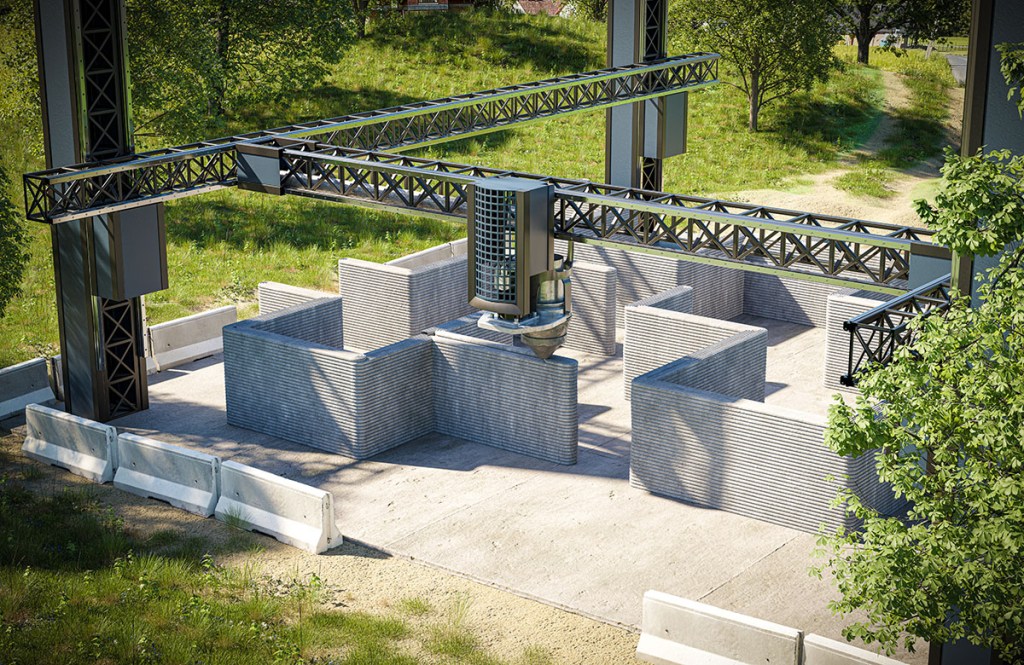Following a $600,000 research grant to the city of Nome, Alaska, that was issued last year, senior officials at the U.S. Department of Housing and Urban Development (HUD) visited the University of Alaska at Fairbanks to tout the possibilities that 3D printing technology could bring to the construction of affordable housing in the U.S.
The grant went to a project team consisting of partners at Penn State University and a nonprofit research firm, the Xtreme Habitats Institute (XHI). The partners will conduct the “design, engineering, materials research, development, planning, and analysis” that is required for 3D printing of “high-quality, affordable, energy-efficient, and sustainable housing for communities in sub-arctic regions of Alaska,” HUD explained.
HUD grants and associated work
Students at Penn State will work to “refine, test and design protocols” for the mobile printing unit at the heart of the effort that will be moved to the city of Nome. There, the team will use a specialized 3D printer “designed and built for the environment to construct and evaluate a prototype home,” HUD explained.
A key goal for the project includes the deployment of local and sustainable resources for construction materials. Beyond HUD, the university and the city of Nome, other partners include the Alaska Housing Finance Corp., the Cold Climate Housing Research Center, the National Renewable Energy Laboratory, XHab 3D Inc. and Fairbanks Materials Inc.
This week, HUD officials — including Solomon Green, principal deputy assistant secretary (PDAS) for policy development and research; Richard Monocchio, PDAs for public and Indian housing; and Northwest regional administrator Andrew Lofton — showcased this new technology at an event.
“We need to think bigger, bolder, and more creatively than ever if we want to build the affordable homes of the future,” Greene said in a statement. “Here at HUD, we are using innovative solutions to build the housing our growing nation needs. This 3D printer is an exciting representation of this new frontier, and we cannot wait to see it at work.”
Lofton said the demonstration marked a “momentous day,” adding that the use of new and novel technologies could have a big impact on rampant housing supply issues — which are improving — across the nation. This is particularly true for areas with extreme climates like Alaska.
“Today, we showcased the latest example of how technological innovation, when paired with local knowledge and strong community partnerships, can help us build the quality, affordable, and resilient homes our country needs,” Lofton said.
Cost and efficiency potential
Earlier this year, an article in Smithsonian Magazine took a closer look at the potential for 3D-printed homes. The opportunity is there, the article explained, as the speed of the technology outpaces traditional methods and costs are beginning to fall.
Sierra Romas, a beneficiary of a Habitat for Humanity home in Newport News, Virginia — who was profiled in the article — described the experience of watching a 3D printer fashion 166 separate concrete layers that would form the walls of her home as “surreal.”
“Concrete printing is faster — the walls for Sierra’s 1,300-square-foot home were constructed in about 40 hours,” the article stated. “It’s also becoming cheaper than conventional wood-frame building, which has changed little in a century.”
The Habitat for Humanity Peninsula and Greater Williamsburg chapter in Virginia has constructed three 3D-printed homes in Virginia so far, with more on the way. The organization’s CEO said that the cost has decreased with each subsequent project.
“Sierra’s cost Habitat about $215,000, which amounted to $25,000 less than the first one; the land was free from the city’s housing authority,” the article stated.
The article added that construction is cleaner and the homes are more energy efficient since concrete is better for insulation. They are also less likely to burn down or be blown down, which could be attractive for insurers.
3D printers used for these tasks also require only one or two people to operate, which could be a key detail as the nation faces a shortage of construction workers, according to information released in January by Associated Builders and Contractors.
Affordable housing construction via 3D printing has also taken place in Texas, where a pair of startups seek to put a dent in inventory and address climate change issues by using 3D printing technology to build homes in central portions of the state.





